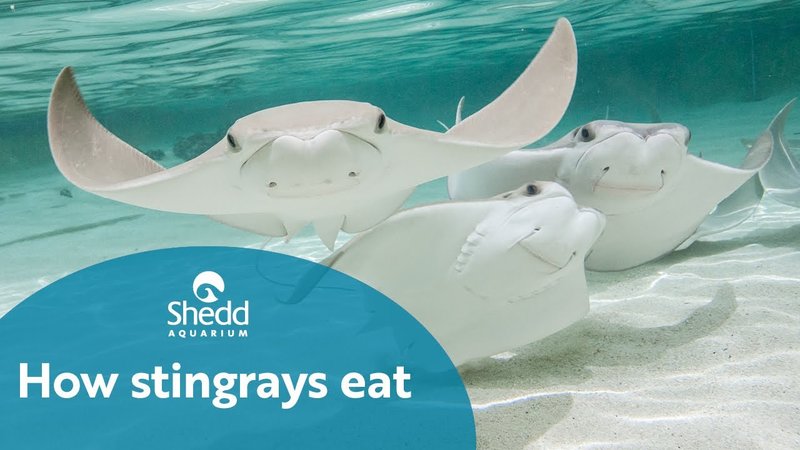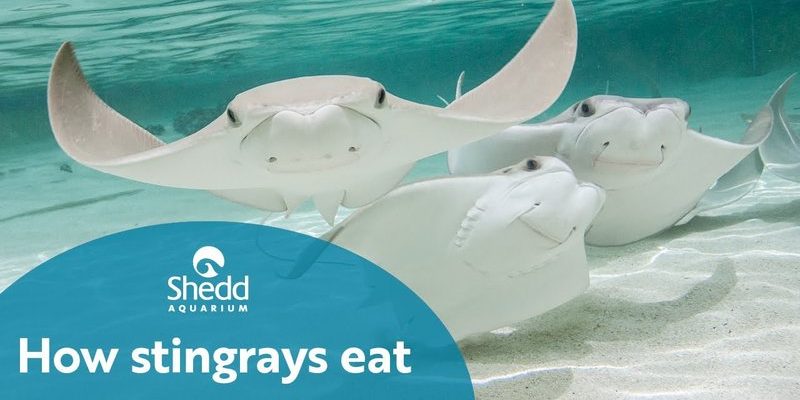
Stingrays are truly unique, and their feeding habits reflect their adaptability to different environments. Imagine going to a buffet where everything is fresh and available. Stingrays have their own version of this buffet set up in sandy ocean floors and murky waters, where they find their meals. The way they feed isn’t just interesting; it’s essential for their survival and the health of their habitats. Let’s dive in and explore the fascinating world of stingray diets!
What Do Stingrays Eat?
Stingrays are primarily carnivorous, which means they love to feast on other animals. Their diet mainly consists of:
- Fish: Smaller fish are a staple in their diet.
- Crustaceans: They enjoy snacks like shrimp and crabs.
- Mollusks: Clams and snails are frequent treats as well.
These diet choices can vary based on their species and habitat. For instance, a freshwater stingray may munch on different things compared to a saltwater stingray. Their eating habits are influenced by their location, which means they’re adaptable hunters.
You might be wondering how these creatures find their food among the sand and rocks. Well, they often use their keen sense of smell and electroreception—the ability to detect electrical signals in the water from their prey. Imagine being able to feel where the food is hiding without seeing it. That’s a superpower stingrays have, allowing them to thrive in diverse environments.
How Do Stingrays Hunt?
Stingrays have a unique way of hunting that’s almost like a stealth mission. They tend to bury themselves in the sand with just their eyes peeking out. This clever tactic helps them ambush unsuspecting prey. Picture a ninja hiding in a bush, ready to spring into action—this is how stingrays operate!
When they sense movement nearby, they quickly dart out and grab their meal using their flat, wide mouths. Their mouths are designed for sucking in food, which is quite different from how most fish eat. This vacuum-like action helps them capture prey efficiently.
Once they’ve caught something, stingrays often crush their food using their flat, plate-like teeth. These teeth are perfect for grinding up shells and hard-bodied animals. It’s nature’s way of making sure they can get the nutrients they need without much fuss.
Feeding Techniques of Different Stingray Species
Different *stingray species* have developed unique feeding techniques. For example:
- Southern Stingray: This species tends to forage in shallow waters. They glide along the ocean floor, using their flat bodies to uncover buried prey.
- Yellow stingray: Known for their vibrant colors, they typically hunt at night, using their excellent night vision to find food.
- Freshwater Stingrays: These rays prefer rivers and lakes, often eating smaller fish and crustaceans that are abundant in their habitats.
Each of these species has adapted to their environment, which influences how they hunt. It’s fascinating to see how their feeding habits reflect the habitats they live in.
The Role of Stingrays in Their Ecosystem
Stingrays play a crucial role in maintaining the balance of their ecosystems. By preying on fish and invertebrates, they help control these populations, preventing overpopulation of certain species. This balance is essential for a healthy ocean environment.
Additionally, when stingrays feed on crustaceans and mollusks, they help keep these populations in check as well. Their feeding habits can also contribute to nutrient cycling within the sand and sediment of their habitats. Imagine stingrays as nature’s gardeners, helping to cultivate a healthy ecosystem.
Their presence can benefit other marine species too. By hunting smaller fish, they create opportunities for larger predators. It’s a classic case of the circle of life playing out in the water!
Feeding Behavior and Patterns
Stingrays often exhibit interesting feeding behaviors depending on the time of day. Many species are nocturnal, meaning they hunt primarily at night. This helps them avoid daytime predators and take advantage of the abundance of smaller fish and crustaceans that are active after dark.
During feeding, stingrays often gather in groups, which can be a social affair. You might see them swimming together, using their collective presence to hunt more effectively. They communicate and navigate their environment together, which can be quite a sight.
For instance, some species have been observed using a “teamwork” approach to reveal buried prey. One stingray might stir up the sand while another swoops in for the catch. It’s like a well-choreographed dance among friends!
Challenges in Their Diet
However, stingrays face challenges when it comes to finding food. Habitat loss and pollution can impact their feeding grounds. Overfishing can also reduce the populations of fish and invertebrates they rely on for sustenance.
Climate change poses additional risks, altering marine environments and affecting prey availability. As the waters warm and habitats change, stingrays may find it harder to hunt and thrive. They rely heavily on healthy ecosystems to support their diets, so any disruption can have significant consequences.
Conservation efforts are essential to protect these majestic creatures and their food sources. By preserving habitats and regulating fishing practices, we can help ensure that stingrays continue to find their buffet of tasty meals for generations to come.
How to Observe Stingrays in Their Natural Environment
If you’re interested in seeing stingrays in action, consider taking a snorkeling or diving trip to their natural habitats. Shallow coastal waters, estuaries, and sandy bays are great locations to spot these graceful animals.
When observing stingrays, remember to be respectful. Keep a safe distance, as they can feel threatened if people get too close. Watching them glide effortlessly along the ocean floor is a special experience that reminds us of the beauty of marine life.
In marine parks or aquariums, you might get the chance to interact with stingrays through feeding programs. These opportunities can provide insight into their feeding habits while promoting awareness about their conservation.
Stingrays are remarkable creatures with fascinating diets and feeding behaviors. Their role in the ecosystem is vital, and understanding what they eat and how they hunt can enhance our appreciation for these marine animals. From their stealthy hunting techniques to their essential role in maintaining ecological balance, stingrays offer us a glimpse into the wonders of ocean life.
As we explore the mysteries of the marine world, let’s remember how crucial it is to protect these incredible creatures and their habitats. By doing so, we can ensure that stingrays continue to thrive, reminding us of the beauty and complexity of nature beneath the waves.

